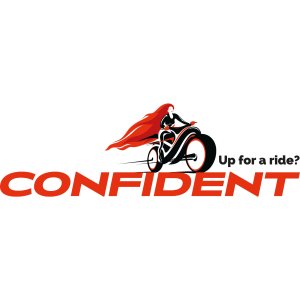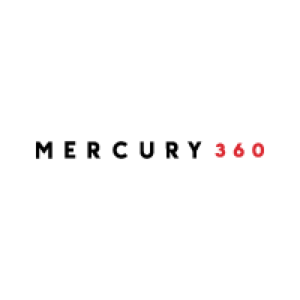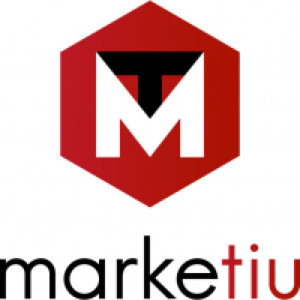How do you create identities that stand the test of time in an era of constant change?
Brands evolve rapidly, connecting with their audiences across different platforms. The branding process must also be fluid and conscious of these transformations, believes Clémentine Segard, Partner Carré Noir, the leading French branding agency. Carré Noir has made its name building iconic brands that defy trends and borders: Dacia, Michelin, Auchan, Engie, and Lancôme, to name but a few. Carré Noir has created the global branding for the City of Paris.
Clémentine Segard shared insights about the stages behind such an ambitious process at Creativity 4 Better, the conference organized by IAA in Bucharest.
"We design systems that are more agile, that are more fluid, so that they can be more interesting over the course of time. And also, that means that we give guidelines that are more like toolbox rather than an incredible set of rules", says Clementine.
During a break at the conference, we talked to Clémentine about the changes in branding, the power of ideas, responsibility and authenticity, connecting with new generations.
Why did you choose branding
It's funny because I was studying in one of the best French universities, which is called Sciences Politiques. A lot of journalists come out of there. I was actually doing my first internship in a research company, so I was working with data, which was great to start with, because it's a good solid foundation, but not a lot of fun for somebody who's quite creative. One of my colleagues was working in branding and design and I had him actually explain to me a few times what it was, because I just didn't know what it meant.
Once I understood I was very excited, because I hesitated between working in Sciences Po or studying design, industrial design, and then there's a job that actually bridges the two. So I thought it was a great opportunity. And I was lucky, because I started in Landor, which is another one of the great branding and design agencies in the world. And I was completely taken by the fact that it bridges across things that I enjoy, but that are sometimes considered separate. One side, which is analytical, strategic, you know, you need to have something that stands on its two feet that makes sense, and is emotional, is creative. To bring the two together, rational and emotional and creative and solid.
Changes in branding
I think the big shift since I've been in branding is how it's perceived in the chain of value. I think that it used to be perceived as maybe more of an aesthetic gesture, something that was happening at the end of the brand, of the construction of the brand process, with advertising agencies being at the heart and working on the brand platform, working on the positioning, and then giving us the design to do. And that's something that we've seen completely change over the last 20 years. We've seen that completely going reverse.
In advertising, they've got an objective to raise the sales curve, which we don't. That means that they are focusing on the interests of the brand on a much shorter time span as we do in branding. We're touching on identity, something that's going to last the test of time.
Branding and design agency is considered at the beginning of the value chain now, we're here to work to translate the strategy of the company into a strong idea and then strong visuals and strong strong experiences above all else.

Clémentine Segard on the Creativity 4 Better stage, Bucharest, 2024
Branding in the age of discontent
I do think that authenticity is important. So I don't think that brands need to speak necessarily to everyone. They need to unite around communities that recognize itself in the values that they carry. Already that is a challenge. I think that not wanting to be everything to everyone is important, but then, choosing your people, choosing what values you defend, and then the right people will unite around that idea.
I believe in intellectual humility and openness, and the fact that you are not exactly the same, but you keep open dialogue. Humility and being interested in the other point of view will help.
Your personal definition of creativity
I'm more and more interested in novel ways to look at problems and novel ways to look at things and I think that the thing that inspires me most is actually being able to work on different type of industries or even working with NGOs or being curious in something else. Looking at an old problem from a different lens.
It's very interesting because we've seen the shift between old school identities and the new ones. For example, I still remember one of my colleagues having the graphic guidelines of Michelin on their shelves at work. It was incredible, it was like two big books of 200 pages.
The fact is that now it's not possible anymore because. Brands move a lot faster, but also with social networks, we have a lot more points of contact with any given brand. Now we see brands express themselves across a variety of channels and a lot more often, which means that we need to give them codes that are a lot more flexible, because you cannot use that one same image over and over and over again, because everybody is so bored out of their mind by the second occurrence. So it's changed the way we design.
We design systems that are more agile, that are more fluid, so that they can be more interesting over the course of time. And also, that means that we give guidelines that are more like toolbox rather than an incredible set of rules. So we put more effort in making people understand the brand, understand its spirit, understand its attitude, and less time understanding the exact rule. Because if they've got the gist of it, then they can be creative with it and provide another execution that's still interesting. That shortens the time we spend on guidelines, we get them out faster because it's not like the Bible. We're not writing the Bible this time.
But nevertheless, you need to think of what's at the heart of the identity and what's secondary and what's tertiary, so that you've got enough that will be applied across touch points and people still recognize the brand.
Gen Z
They are very fluid and they will shift faster, but they are closer to the notion of identity. It shows in the brand that they valorize. This is a question actually that we had working for Visa. We've been advising the global Visa brand from Paris, for creating the look and feel for the Olympics. One of the question was that: imagine they used to be in everybody's pockets on their cards, but the younger generation use their phones to pay for everything. So they don't even see that card with the visa logo anymore.
So that was their question: how do i speak to these people that they actually start choosing us. We were saying: well, it's not about adopting their codes, because their codes evolve very, very fast, so you're always going to be lagging behind and also it might be a little bit ridiculous for longer existing brands to be dressed up as a young consumer.
And I think that what we identified as an action point is actually to have some cause on the way they behave, the way they interact. So, whoever you are as a brand, it needs to transpire through. You need to speak from a space of authenticity. Otherwise, I think it's the same thing with humans, you cannot connect if you're fake.
And then the other thing it was about flexibility. You need not to have just a few letters, you need to have a whole vocabulary that's capable to engage with the fluidity. It's essential for brands, when talking from the younger generation, meaning authenticity, but also vocabulary that's rich enough to do them in different occurrences with a little bit of freshness.
Your vision as a strategist
There's two themes that are close to my heart. One of them is that I like ideas to stand on their two legs. They need to have a backbone. They need to be logical. So I think that sometimes we do things based on an idea, on a trend, on a moment. And I am a firm believer that you need to have something to say, something that's true, that's relevant.
I tend to be the challenging person in the room that might have a different opinion, but because I go and try to get to the bottom of it.
The second thing is that I believe that we all have a responsibility. Personally, but also as professional. You can see that states are not doing enough for transforming society and transforming our economy for a more sustainable future. So a lot of the responsibility rests on the companies, on our clients, and on us, as strategic advisors for them. We need to push them as hard as possible in the right direction. Which is not always easy, because we're here to capture the strategy, but we're not here to do the strategy.
That's what social responsibility is about. It's about listening to your different stakeholders and understanding how your activity impacts all of them and basically. And then working with them to select that the impacts that they consider as most important for them, both from a impact point of view, but from a business point of view, and then crafting it into a purpose. When we work on these purposes, that's where the most magic happens, because we help them craft in an inspiring way with the strategy.
The influence of AI
Obviously, everybody sees it as a new gold rush and wants to get to use it. And I think the fight for us is indeed just to use it, but use it in a way that is meaningful.
An ask: is it standing on its feet? Is there a meaning behind it? Is there an idea?






















